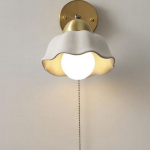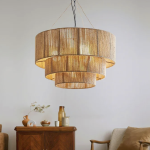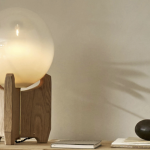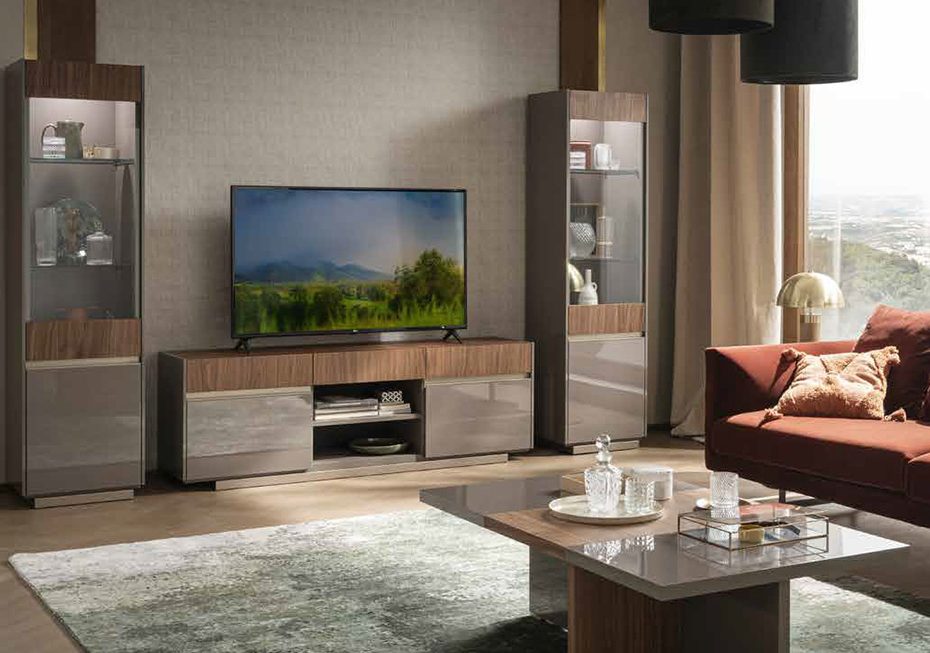When it comes to designing and decorating your bathroom, one element that often gets overlooked is the ceiling light. However, choosing the right ceiling light for your bathroom is crucial for creating a functional and aesthetically pleasing space. Proper lighting in the bathroom is essential for tasks such as applying makeup, shaving, and grooming. It also plays a significant role in setting the mood and ambiance of the room.
The benefits of choosing the right ceiling light go beyond just functionality. It can enhance the overall design and style of your bathroom, making it a more inviting and enjoyable space. Whether you have a small powder room or a spacious master bathroom, selecting the appropriate ceiling light can make a significant difference in how the room looks and feels.
Consider Your Bathroom’s Style and Design When Choosing a Ceiling Light
When choosing a ceiling light for your bathroom, it’s essential to consider the style and design of the space. The ceiling light should complement the overall aesthetic of the room and enhance its visual appeal.
If you have a modern or contemporary bathroom, you may opt for sleek and minimalist ceiling lights with clean lines and simple designs. On the other hand, if your bathroom has a more traditional or vintage style, you might choose a ceiling light with ornate details or a classic chandelier.
Matching the ceiling light with the bathroom’s overall design is crucial for creating a cohesive and harmonious look. It helps tie all the elements of the room together and creates a visually pleasing space.
Types of Ceiling Lights: Which One Works Best in Your Bathroom?
There are several types of ceiling lights to choose from when it comes to illuminating your bathroom. The three most common types are flush mount lights, semi-flush mount lights, and pendant lights.
Flush mount lights are fixtures that are mounted directly against the ceiling, providing a seamless and clean look. They are ideal for bathrooms with low ceilings or limited space. Flush mount lights come in various styles and designs, making it easy to find one that suits your bathroom’s aesthetic.
Semi-flush mount lights are similar to flush mount lights but hang slightly lower from the ceiling. They offer a bit more depth and dimension to the room while still providing a sleek and compact look. Semi-flush mount lights are a popular choice for bathrooms with higher ceilings.
Pendant lights are suspended from the ceiling by a chain or rod, creating a dramatic and eye-catching focal point in the room. They are ideal for larger bathrooms or spaces where you want to make a statement. Pendant lights come in various shapes, sizes, and styles, allowing you to find one that matches your bathroom’s design.
Each type of ceiling light has its pros and cons. Flush mount lights are great for small bathrooms but may not provide enough light for larger spaces. Semi-flush mount lights offer a balance between functionality and style. Pendant lights can add a touch of elegance and sophistication but may require more maintenance and cleaning.
Size Matters: How to Choose the Right Size Ceiling Light for Your Bathroom
Choosing the right size ceiling light is crucial for ensuring proper illumination in your bathroom. The size of the ceiling light should be proportional to the dimensions of the room.
To determine the appropriate size, you can start by measuring the length and width of your bathroom in feet. Add those two numbers together, and the sum will give you an estimate of the ideal diameter for your ceiling light in inches. For example, if your bathroom is 8 feet long and 6 feet wide, the sum would be 14 feet, which translates to a 14-inch diameter ceiling light.
It’s important to note that this is just a general guideline, and other factors such as ceiling height and personal preference should also be taken into consideration. If you have high ceilings or a larger bathroom, you may want to opt for a larger ceiling light to ensure adequate lighting.
In addition to the size of the ceiling light, you should also consider the height at which it will be installed. The bottom of the ceiling light should be at least 7 feet above the floor to avoid any potential hazards and ensure proper illumination.
Brightness and Wattage: How Much Light Do You Need in Your Bathroom?
The brightness and wattage of your bathroom ceiling light are essential factors to consider when choosing the right lighting for your space. The amount of light you need depends on the size of your bathroom and the tasks you will be performing.
For general ambient lighting, it is recommended to have around 20 lumens per square foot of space. To calculate the total lumens needed, multiply the square footage of your bathroom by 20. For example, if your bathroom is 100 square feet, you would need a total of 2000 lumens.
In addition to brightness, you should also consider the color temperature of the light. Warm white light (around 2700-3000K) is ideal for creating a cozy and relaxing atmosphere, while cool white light (around 4000-5000K) is better for task-oriented areas such as vanity mirrors.
It’s important to strike a balance between functionality and ambiance when choosing the brightness and wattage of your bathroom ceiling light. You want enough light to perform tasks effectively but not so much that it becomes harsh or overwhelming.
Energy Efficiency: Choosing a Ceiling Light that Saves You Money and the Environment

When choosing a ceiling light for your bathroom, it’s worth considering energy efficiency. Energy-efficient lighting not only helps reduce your carbon footprint but also saves you money on your energy bills in the long run.
LED lights are one of the most energy-efficient options available. They use significantly less energy than traditional incandescent bulbs and have a much longer lifespan. LED lights also produce less heat, making them safer and more comfortable to use in the bathroom.
When shopping for an energy-efficient ceiling light, look for the ENERGY STAR label. This certification ensures that the light meets strict energy efficiency guidelines set by the U.S. Environmental Protection Agency (EPA). ENERGY STAR certified lights are tested and proven to use at least 75% less energy than traditional incandescent bulbs.
In addition to choosing energy-efficient bulbs, you can also consider installing motion sensors or timers in your bathroom to ensure that the lights are only on when needed. This can further reduce energy consumption and save you money.
Lighting Placement: Where to Install Your Ceiling Light in Your Bathroom
Proper placement of your bathroom ceiling light is crucial for achieving optimal lighting. The location of the light should be strategic and functional, taking into consideration the different areas and tasks in the room.
For general ambient lighting, it is recommended to install the ceiling light in the center of the room. This provides even illumination throughout the space and creates a balanced look. If your bathroom has a vanity area, it’s important to have additional lighting above or around the mirror to eliminate shadows and provide adequate task lighting.
In larger bathrooms, you may also consider installing recessed lights or track lighting to provide additional layers of lighting. These can be used to highlight specific areas such as shower stalls or bathtub alcoves.
When planning the placement of your ceiling light, it’s important to consult with a professional electrician to ensure that all electrical codes and safety regulations are met. They can help determine the best location for your ceiling light based on your bathroom’s layout and design.
Dimmer Switches and Other Lighting Controls: Creating the Perfect Ambiance in Your Bathroom
To create the perfect ambiance in your bathroom, consider installing dimmer switches or other lighting controls. These allow you to adjust the brightness of your ceiling light to suit your mood and needs.
Dimmer switches are a popular choice for bathrooms as they provide flexibility and control over the lighting. They allow you to lower the intensity of the light for a relaxing bath or increase it for tasks that require more visibility. Dimmer switches also help save energy by reducing the amount of electricity used.
In addition to dimmer switches, you can also consider installing other lighting controls such as timers or motion sensors. Timers can be set to turn on and off the lights at specific times, ensuring that you never forget to turn them off. Motion sensors are ideal for bathrooms used by multiple people, as they automatically turn on the lights when someone enters the room and turn them off when no motion is detected.
By incorporating these lighting controls into your bathroom, you can create a customized and comfortable environment that suits your needs and preferences.
Maintenance and Cleaning: Keeping Your Bathroom Ceiling Light Looking Its Best
Proper maintenance and cleaning of your bathroom ceiling light are essential for keeping it looking its best and functioning optimally. Regular cleaning helps remove dust, dirt, and grime that can accumulate on the surface of the light fixture.
Before cleaning your ceiling light, make sure to turn off the power at the circuit breaker to avoid any electrical hazards. Use a soft cloth or sponge dampened with a mild cleaning solution to wipe down the surface of the light fixture. Avoid using abrasive cleaners or harsh chemicals, as they can damage the finish or components of the light.
If your ceiling light has glass or plastic shades, you can remove them and wash them separately in warm soapy water. Rinse them thoroughly and dry them before reattaching them to the light fixture.
It’s also important to regularly check the bulbs in your ceiling light and replace them as needed. Burnt-out bulbs not only reduce the amount of light produced but can also put strain on the other bulbs in the fixture.
Tips for Choosing the Perfect Ceiling Light for Your Bathroom
Choosing the right ceiling light for your bathroom is crucial for creating a functional and visually appealing space. Consider the style and design of your bathroom when selecting a ceiling light, and choose one that complements the overall aesthetic.
There are several types of ceiling lights to choose from, including flush mount lights, semi-flush mount lights, and pendant lights. Each type has its pros and cons, so consider your bathroom’s size and layout when making a decision.
Size matters when it comes to choosing a ceiling light. Measure your bathroom’s dimensions and choose a light that is proportional to the space. Consider the brightness and wattage of the light, as well as its energy efficiency.
Proper placement of the ceiling light is essential for achieving optimal lighting in your bathroom. Consult with a professional electrician to determine the best location based on your bathroom’s layout.
Consider installing dimmer switches or other lighting controls to create the perfect ambiance in your bathroom. Regular maintenance and cleaning will keep your ceiling light looking its best and functioning properly.
In conclusion, choosing the perfect ceiling light for your bathroom requires careful consideration of various factors such as style, size, brightness, energy efficiency, and maintenance. By taking the time to select the right ceiling light, you can create a functional and visually appealing space that meets all your lighting needs.











